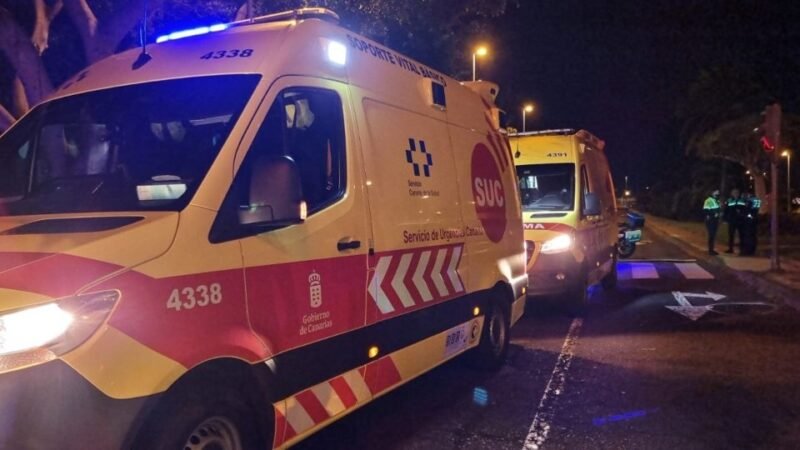A group of researchers in Tenerife will delve into the oral and written testimony of the island to continue shaping a nearly unknown historical event: the reception of the 77 British shipwreck survivors who arrived in Santa Cruz after the sinking of the ‘Britannia’ in 1941. The account of the events, currently supported by an English chronicle signed by Naval Lieutenant Anthony J.E.P. Sangster, highlights the value of the local anecdote for understanding global history in general.
The curiosity arose when, in April, Daniel García Pulido, Joaquín Reyes García, and Francisco Cabrera Alonso decided to delve into the ‘treasures’ housed in the Canary Islands Fund of the General and Humanities Library of the University of La Laguna and the Center for History and Military Culture of the Canary Islands, where a tourist, Charles Anthony Sangster, had arrived to donate part of his father’s history, who was one of the shipwreck survivors of the British merchant vessel.
The sinking of the ‘Britannia’ took place in 1941. This 8,800-ton vessel had departed from Liverpool bound for India but was attacked on March 25, 1941 by the German auxiliary cruiser Thor –then under the command of Captain Otto Kähler– about 750 miles west of Sierra Leone, as documented by the research group in their article provided to the media.
THE HISTORY: THE RESEARCH ARTICLE
Following the sinking of the vessel, with a total of 484 passengers and crew, 249 perished. Some lifeboats were rescued in the following days by ships of different nationalities, including the Spanish merchant vessel ‘Cabo de Hornos’. On its way from Buenos Aires to the peninsula, it rescued 77 shipwreck survivors who had been adrift for five days.
Finally, ‘Cabo de Hornos’ landed the rescued individuals in Santa Cruz de Tenerife on April 3, 1941, as punctually reported by the local press. Due to their health condition, they required initial care from the Red Cross at the port and were then transferred for recovery to the Zerolo Clinic in the city of Tenerife.
Subsequently, most of the survivors stayed at two English-owned hotels of the time, where the British consulate staff also resided. Their repatriation, as noted by the researchers, was not immediate, and therefore, their stay in Tenerife was extended for four months.
ARRIVAL OF THE CHRONICLE IN TENERIFE: A TOURIST VISIT
«The son of Anthony J.E.P. Sangster visited Tenerife as a tourist. He tried to donate his father’s manuscript to different cultural institutions. It may be that some of them did not take it seriously, but it did fall into two places where that history was valued,» commented historian Francisco Cabrera in an interview with Europa Press, celebrating the «sensitivity» acquired by the staff.
The expert explains that the documentation work undertaken involved exploring the remnants of the event in the local press. They only found a news article in the El Día newspaper, relating to the day after. Thus, it is believed that the «secrecy» of the time, marked by the Francoist dictatorship and World War II, was behind these exposure difficulties.
The research collective highlights the importance of delving into the local dimension of international events for history. Cabrera recalls the Canary Islands’ habit of «undervaluing» their history, which seems contradictory when, he details, there are «quite a few» episodes that, while anecdotal, help understand the past and present of the planet.
Regarding the passage of the shipwreck survivors through Tenerife, he adds that while they were on the island, they integrated into its social climate, even attending the nautical club of the time. Additionally, they also forged bonds with the local population. In fact, Naval Lieutenant Anthony J.E.P. Sangster himself narrates in his chronicle what could have been, perhaps, the beginning of a love story with a ‘young lady’ from the city of Santa Cruz de Tenerife.
THE PATH TO BUILDING A BOOK
Due to the value contained in Sangster’s compiled work of just 40 typewritten pages, historians will seek to gather other written or oral testimonies in a book to further shape the stay of these British shipwreck survivors during the height of World War II.
«Obviously, this whole process will have generated documentation, such as exchanges of letters with the peninsula to see what was done with them, and could even reflect what was debated about it,» notes Cabrera, emphasizing the importance of this event amid a war-torn climate where, although Spain supplied both the Allies and the Axis Powers, the country aligned itself with Nazi Germany and Fascist Italy.
Thus, the researchers’ observation in their article points to how this anecdotal event in the history of the Tenerife capital could have generated some tension, as ultimately, Tenerife provided aid to the British, considered the main enemies at that moment of conflict.







